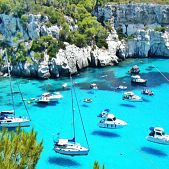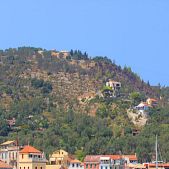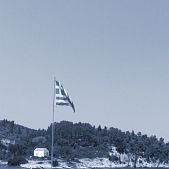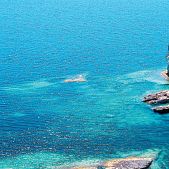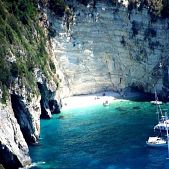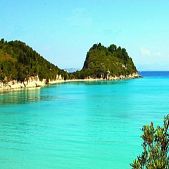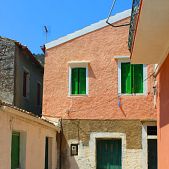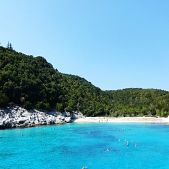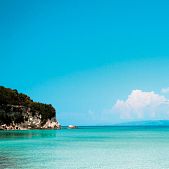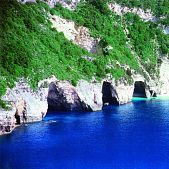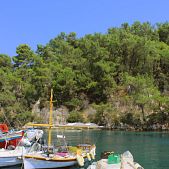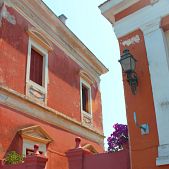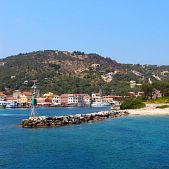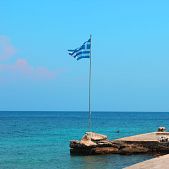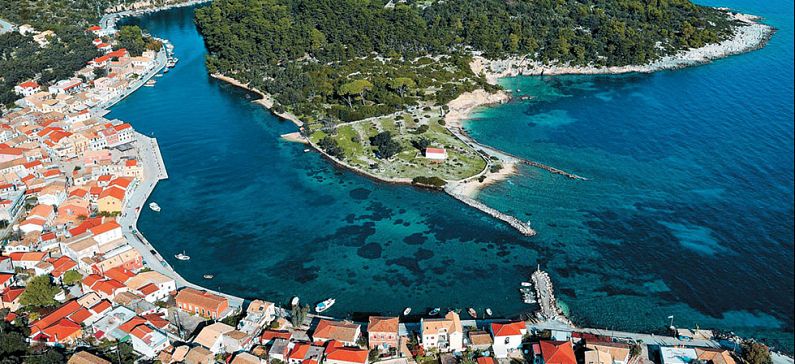
The emerald of Ionian Sea
Paxi or Paxoi is the smallest group of Ionian Islands. The largest islands are Paxos and nearby Antipaxos. Antipaxos is famous for its wine and two of the finest sand beaches in the Ionian Sea. The main town of Paxoi, and the seat of the municipality, is Gaios. In Greek mythology, Poseidon created the island by striking Corfu with his trident, so that he and wife Amphitrite could have some peace and privacy.
You can also visit the church of Agi Apostolis, the island of Panagitsa (the Virgin Mary), Paxos Museum, the churches of Agia Marina and Eleousa, Kastanida and the old factory of Anemogiannis. The island is approximately eight miles (13 km) in length and tipped up towards the west. The west coast is dominated by steep white, chalky cliffs that are greatly eroded at sea level, and harbour many “blue caves”, which can be explored on launches departing from Gaios. Much of the attractive landscape is still covered in olive groves. These stretch from Lakka, the harbour community in the north, through Magazia to Gaios, the capital. Olive oil making, soap manufacture and fishing were supplanted by tourism as the main industry in the mid sixties, resulting in a construction boom, which has greatly altered the coastline around Gaios, the capital of the Paxiot demos
The Phoenicians are traditionally held to have been the first settlers on Paxos. The name is believed to be derived from Pax, which meant trapezoidal in their language. The Romans ruled the island from the 2nd century BC, and during the Byzantine period and Middle Ages it was constantly attacked by pirates. After various rulers and Crusaders had passed through, the island was taken by the Venetians at the end of the 14th century.
During the Napoleonic wars, the Ionian Islands were taken by the French and the Russo-Turkish alliance. On 13 February 1814, the island of Paxos surrendered to the Royal Navy frigate HMS Apollo and 160 troops from the 2nd Greek Light Infantry from Cephalonia and the 35th Regiment of the Royal Corsican Rangers. In 1815, United Kingdom established the Ionian Union. In 1864, together with the rest of the Heptanese, Paxos was ceded to Greece.
Paxos is part of a European network called Cultural Village of Europe. It hosts a yearly classical music festival, which attracts some of Europe’s finest young performers. This festival usually takes place in late August/early September.
TIPS...
-One of the biggest advantages of Paxoi is that they are very close to Mainland Greece and is only an hour away by boat from the port of Igoumenitsa.
– Approximately 300,000 tourists each year choose Paxos for their holidays. The beautiful beaches, crystal clear waters and breathtaking landscapes are well known.
– The island does not have large hotels, you can will find only small lodges or houses rented from the locals
– Visit the spas in the island Ozias, to Gianna and Glyfada
– The imposing stone lighthouse in Lakka was built in 1832.
-The Museum of Paxos, in Gaius, is located in a beautiful neoclassical building and you can observe finds from prehistorical era to the Second World War.


